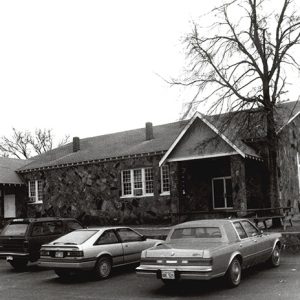calsfoundation@cals.org
Guy (Faulkner County)
| Latitude and Longitude: | 35º19’31″N 092º20’04″W |
| Elevation: | 679 feet |
| Area: | 6.78 square miles (2020 Census) |
| Population: | 752 (2020 Census) |
| Incorporation Date: | September 28, 1966 |
Historical Population as per the U.S. Census:
|
1810 |
1820 |
1830 |
1840 |
1850 |
1860 |
1870 |
1880 |
1890 |
1900 |
|
– |
– |
– |
– |
– |
– |
– |
– |
– |
– |
|
1910 |
1920 |
1930 |
1940 |
1950 |
1960 |
1970 |
1980 |
1990 |
2000 |
|
– |
– |
– |
– |
– |
– |
179 |
209 |
241 |
202 |
|
2010 |
2020 |
|
|
|
|
|
|
|
|
|
708 |
752 |
|
|
|
|
|
|
|
|
Guy was founded by T. J. Rowlett in 1848. Rowlett settled near Cadron Creek, approximately fourteen miles north of Conway (Faulkner County). Originally a small settlement consisting of just one family, Guy grew steadily over the years. The rural city relies primarily on agriculture and local businesses for its livelihood.
Civil War through Reconstruction
In 1865, the Martin and Gentry families joined Rowlett’s settlement, quickly followed by Jacob Hartwick. These three families were a part of a post–Civil War influx of families into the area. As people began to relocate after the war, many moved into Faulkner County, including to what is now Guy, because the area had not suffered as much damage from the war as other areas. As the new settlers moved in, agriculture—the production of cotton in particular—became the way of life in Guy.
Hartwick helped the community’s further commercial development in several ways. In 1868, he built a grist mill on Cadron Creek, just to the north of present-day Guy. He then built the first dam across Cadron Creek to help service the mill. Hartwick also distilled liquor for local residents. A man named I. Green established the first store in the area. During the early years in the town, the settlers relied greatly on the nearby Old Texas settlement for supplies.
Post-Reconstruction through the Gilded Age
John Rimmers moved to Faulkner County in 1876 and, by 1880, had homesteaded twenty acres of land on Pinnacle Springs Road, three miles west of town. He produced both cotton and corn on his land. Until 1885, Rimmers’s cotton gin and the cotton gin at Quitman (Cleburne County) were the only cotton processors in the area, but the community soon acquired its own gin on Wolf Branch Road.
The community continued to grow throughout the late 1800s. By 1885, the town had two doctors. In 1891, the post office from Ruray (Faulkner County), a town north of Guy, relocated to Guy, and Charlie Martin was made postmaster. Martin owned a store in Guy, which served as the location for the new post office. Martin named the town Guy, after his son, in approximately 1890.
In 1898, Guy obtained its own school district when other Faulkner County schools in Wolf Branch (Faulkner County) and Copperas Springs (Faulkner County) consolidated, becoming Guy Proper.
Early Twentieth Century
In 1924, a fire devastated Guy’s business district, leaving only four buildings intact. Many of the town’s businesses lost thousands of dollars in damages. Though some restored or rebuilt their businesses, many left Guy entirely.
The Great Depression hit Guy hard, but the small town was helped by the Works Progress Administration (WPA). Through the WPA, Guy constructed a number of buildings, including additions to the school and library. Guy also used the Smith-Hughes agriculture program, which greatly improved farmers’ circumstances by dedicating federal funds to teaching agriculture as a profession.
In 1929 and 1930, further consolidation of Faulkner County schools occurred. The Rowlett, Perkins, Chinquapin, and Hendrickson districts consolidated with Guy. The new district became known as Guy-Perkins, which is the modern school district.
Guy incorporated as a second-class city on September 28, 1966.
Modern Era
In 2009, Guy began experiencing an earthquake swarm that grew far worse by 2010. Between September 20, 2010, and December 13, 2010, Guy suffered 487 earthquakes. Though most of the earthquakes were small and hardly detectable, some have been as high as a 4.7 on the Richter scale. The cause of the earthquakes remains unknown, but some believe the seismic activity to be the result of natural-gas drilling in the area. Others believe that saltwater disposal wells are to blame.
Guy is one of the few cities in Arkansas that has retained some of the WPA structures it built in the 1930s and 1940s. The school’s home economics building and gymnasium were built through WPA and are still in use as of 2020.
Attractions
Guy is located near Cadron Creek, which in the city’s early history was a source of industry and food. However, as the city has progressed, the creek has primarily become a recreation site for the people who live nearby. Hunting and fishing are popular pastimes in the area.
For additional information:
Faulkner County Historical Society: Guy. https://faulknerhistory.org/communities/guy/ (accessed June 4, 2022).
Faulkner County Historical Society. Faulkner County: Its Land and People. Conway, AR: Faulkner County Historical Society, 1986.
Faulkner County Museum. Conway, Arkansas. http://www.faulknercounty.org/faulknercountymuseum.org/ (accessed June 4, 2022).
Gatewood, Robert L. Faulkner County, Arkansas, 1778–1964: A History in Three Parts. Conway, AR: 1964.
Junas, Lil. Cadron Creek: A Photographic Narrative. Little Rock: Ozark Society Foundation, 1979.
Laura Choate
Conway, Arkansas













Comments
No comments on this entry yet.